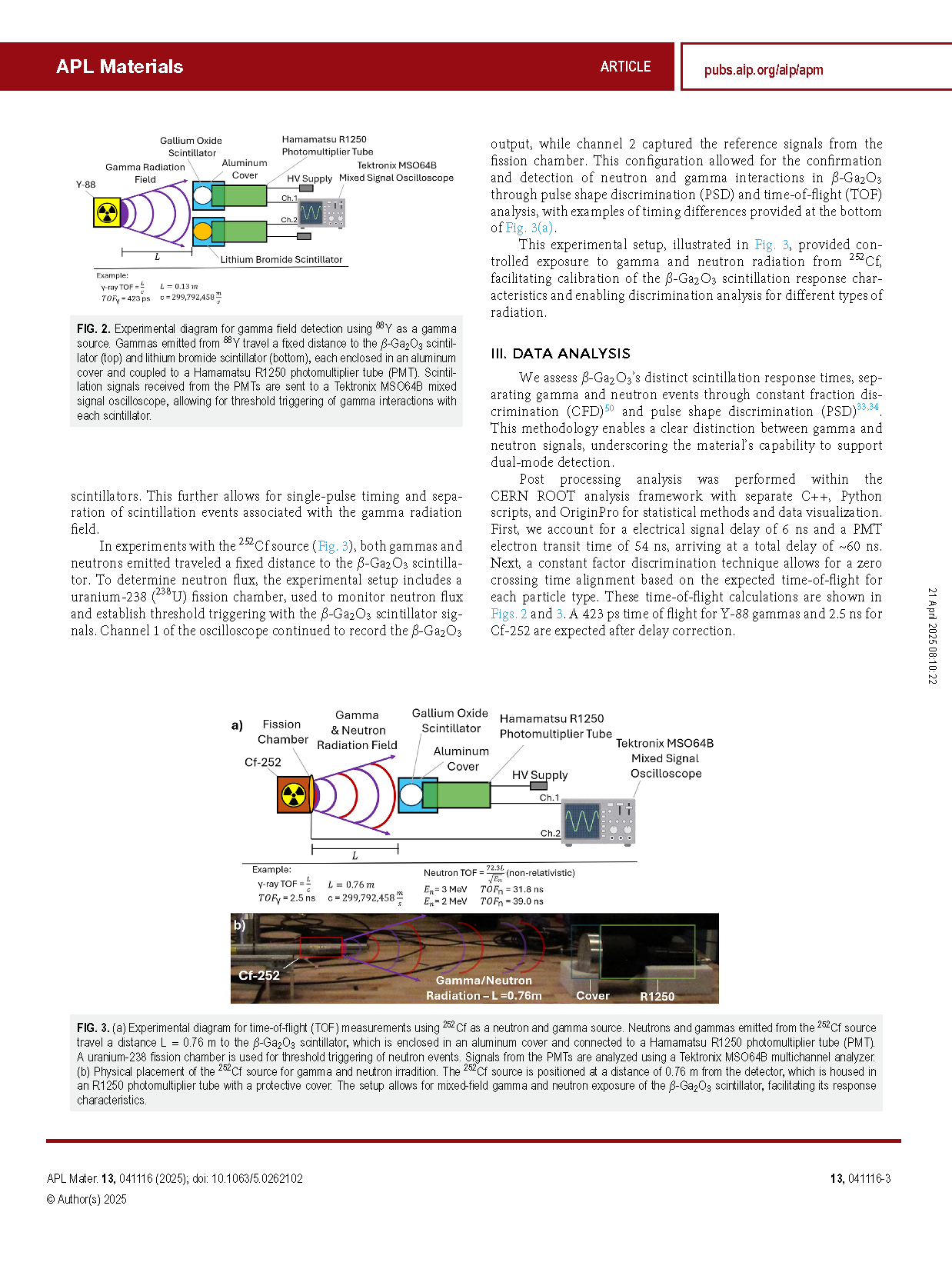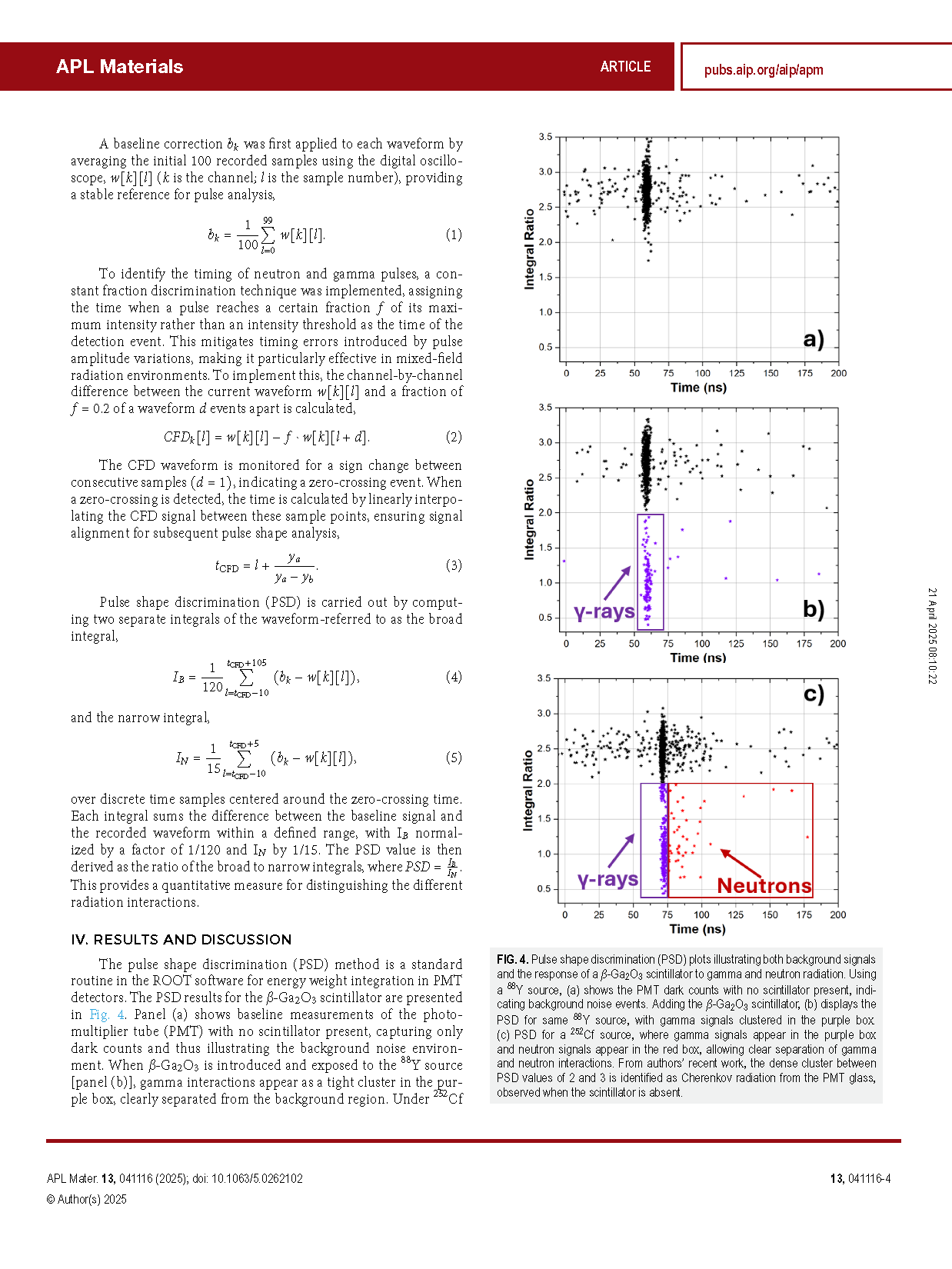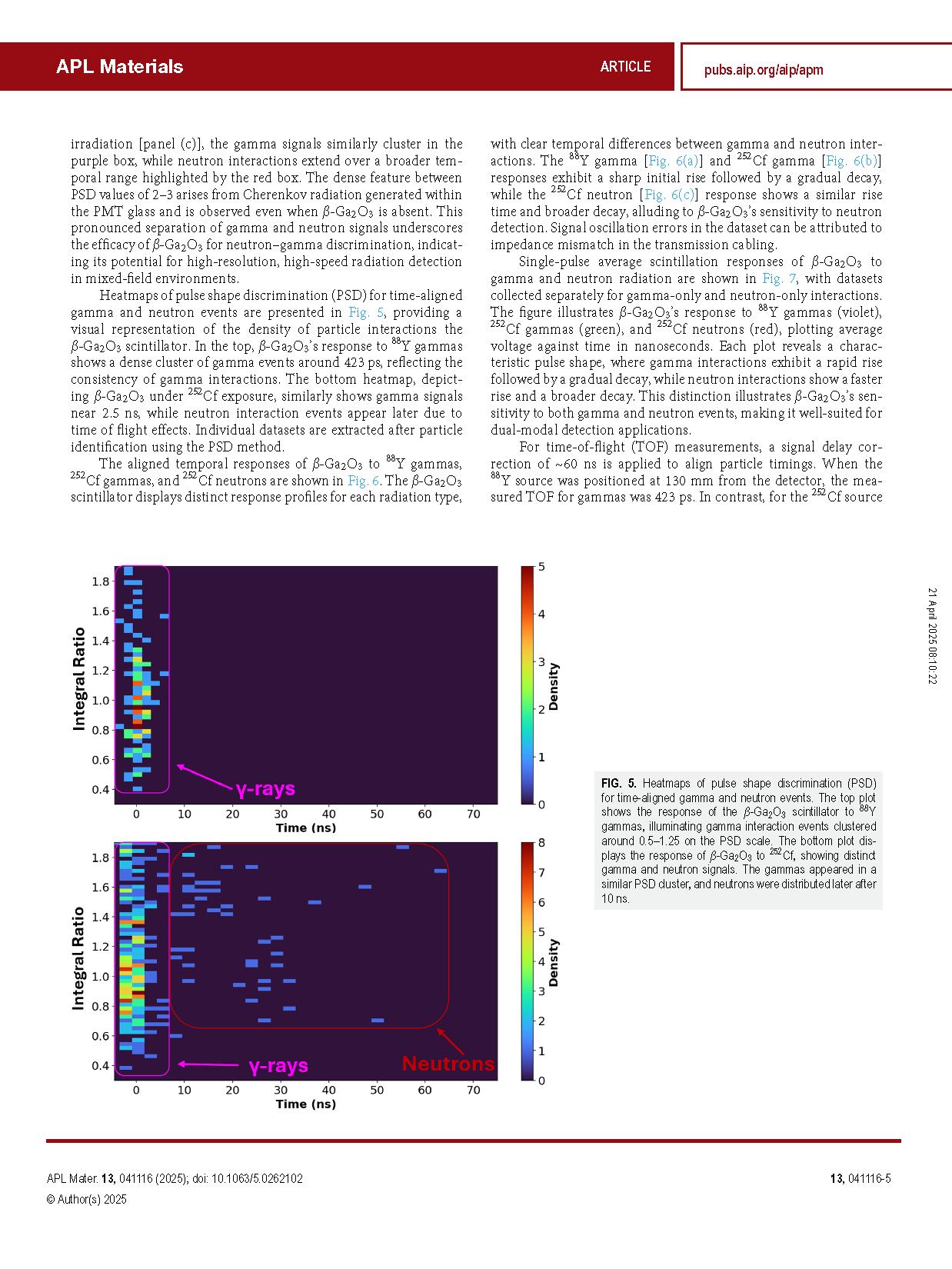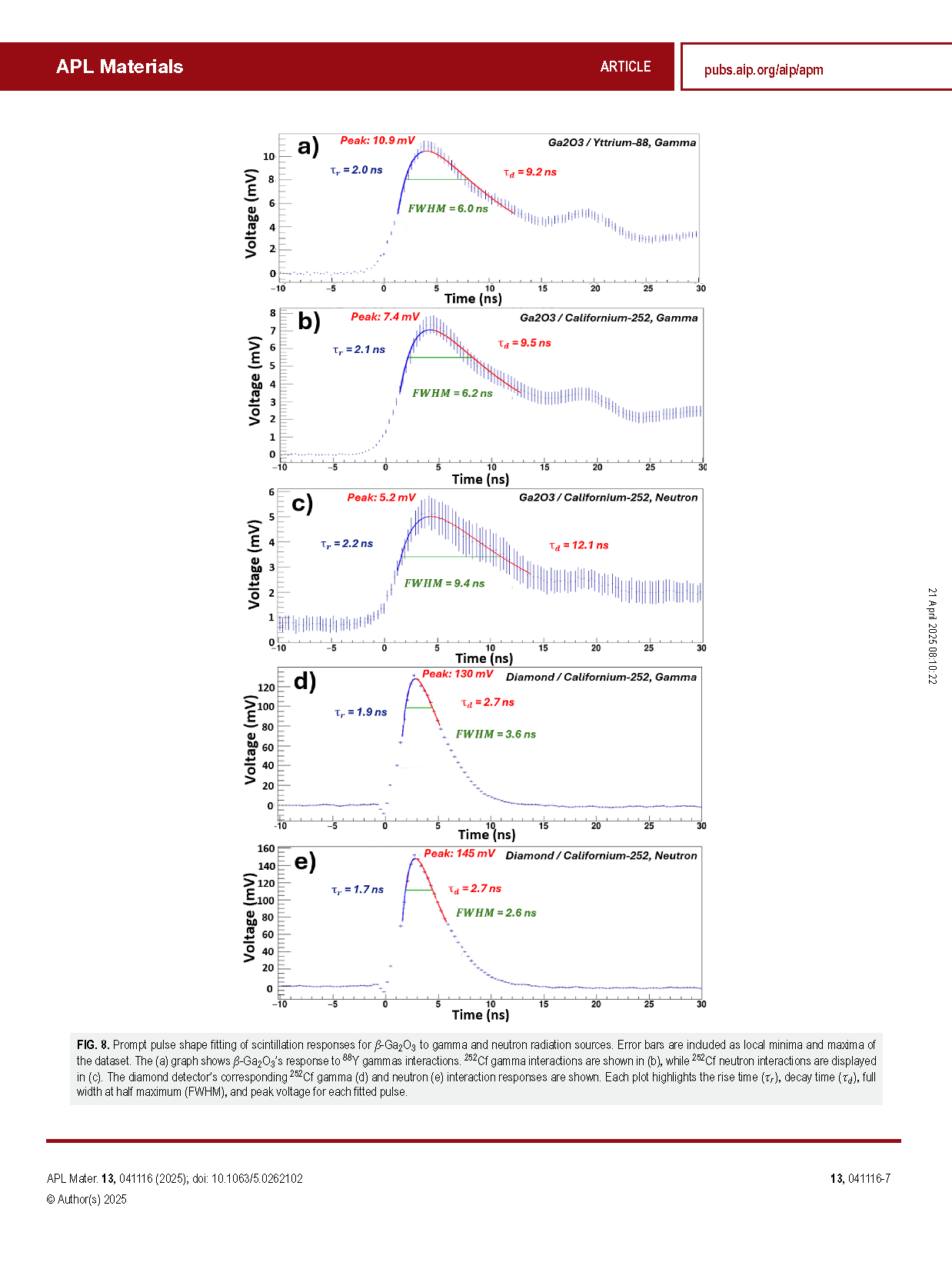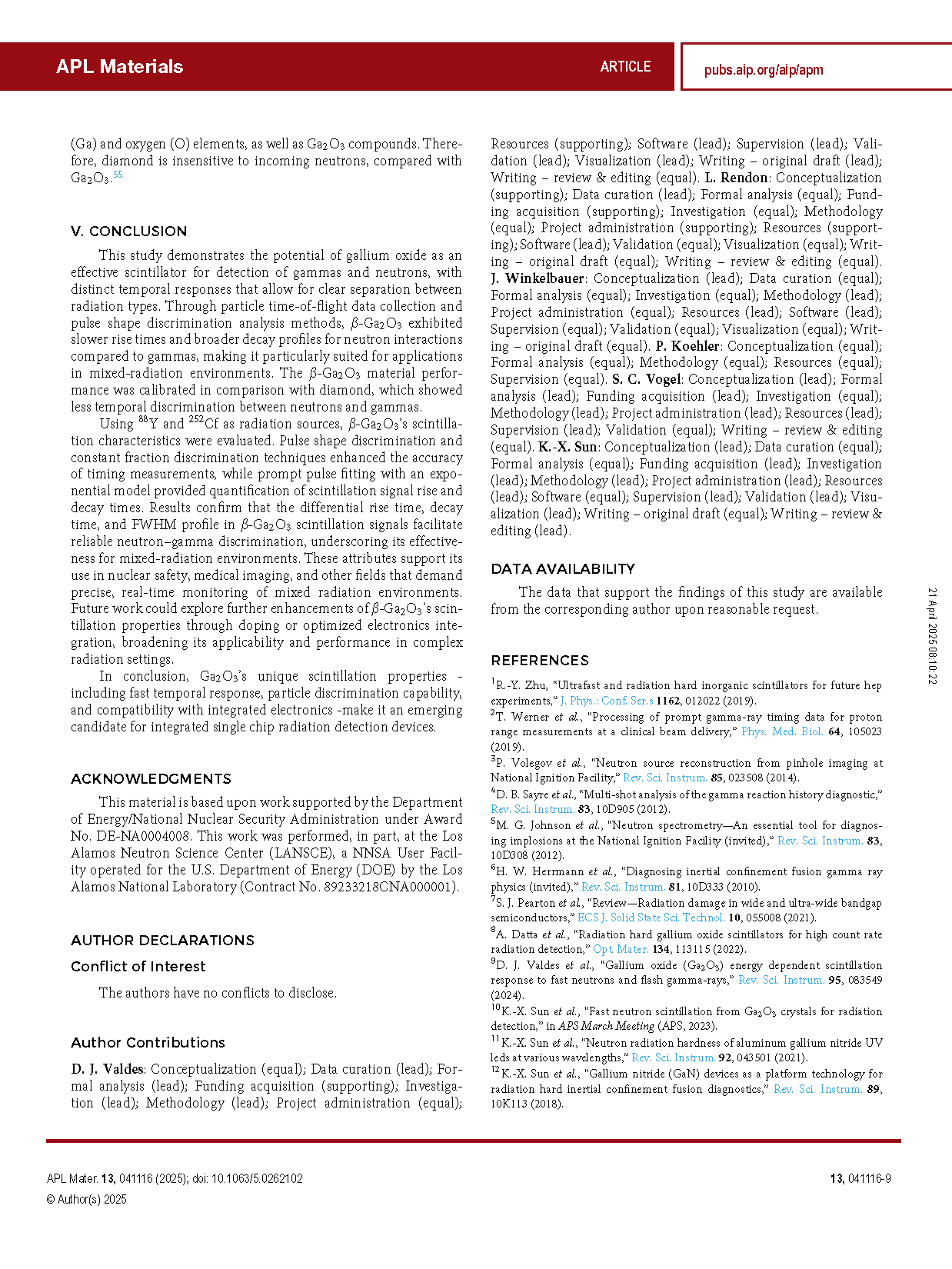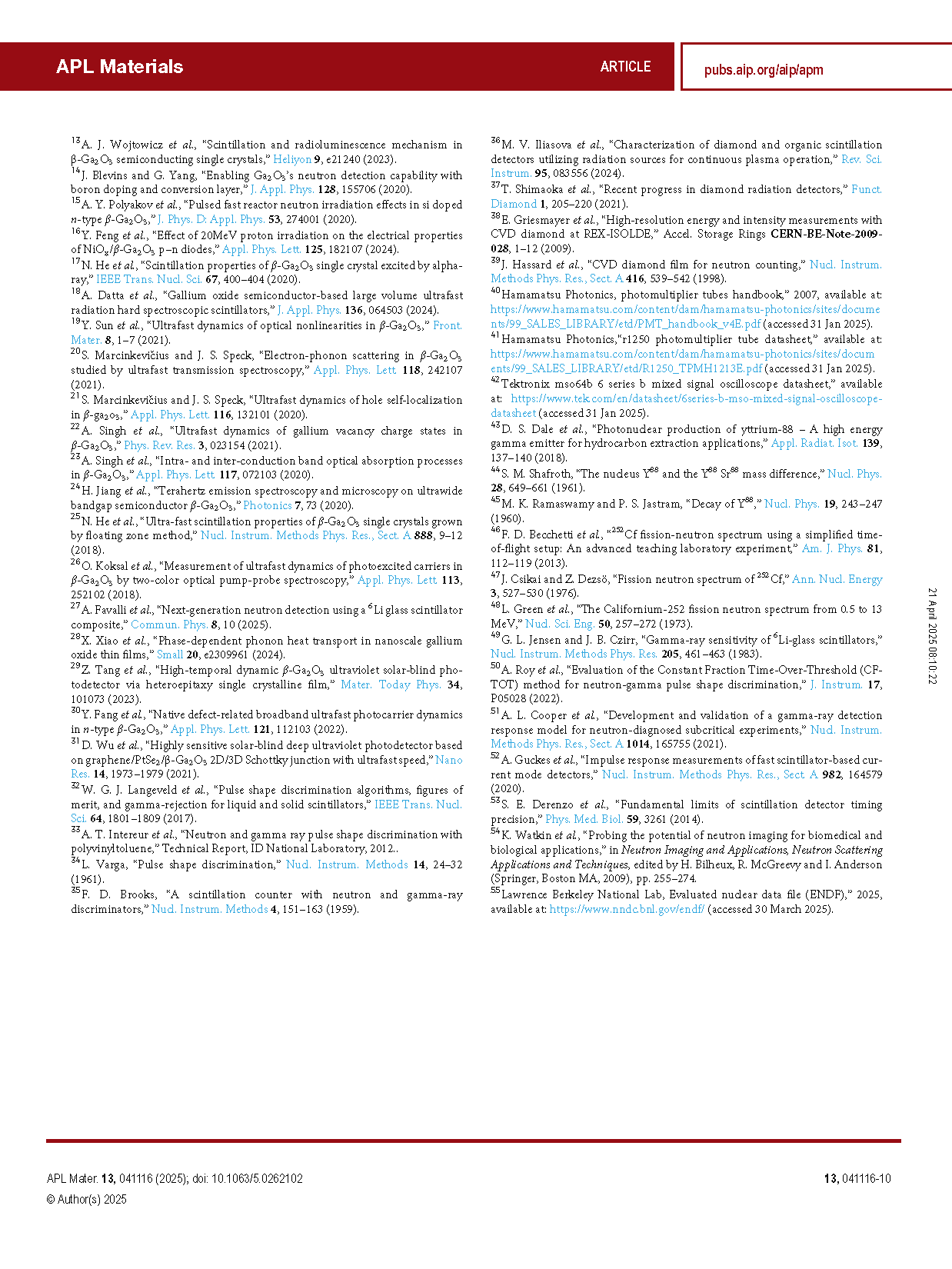
【International Papers】Gallium oxide (Ga₂O₃) as a radiation detector distinguishing neutrons and gammas
日期:2025-05-28阅读:290
Researchers from the University of Nevada, Las Vegas have published a dissertation titled "Gallium oxide (Ga2O3) as a radiation detector distinguishing neutrons and gammas" in APL Materials.
Abstract
Gallium oxide (Ga2O3) is a promising ultrawide bandgap semiconductor for radiation detection with the potential of integrating electronic and scintillation functions within a single crystal device. This study establishes the scintillation response of β-Ga2O3 gamma irradiation from yttrium-88 (88Y). Then, californium-252 (252Cf) is used as a spontaneous fission source of mixed neutron and gamma radiation field to measure scintillation signals. Pulse shape discrimination and constant fraction discrimination techniques were used to separate neutron and gamma interaction events. Further investigation indicates that the prompt temporal responses of β-Ga2O3 for gammas and neutrons may enable discrimination of the two by prompt pulse fitting methods, focused around the initial peak. For gamma irradiation, we observed a rise time (τr) of 2.1 ns, decay time (τd) of 9.5 ns, and a full width at half maximum (FWHM) of 6.2 ns. For neutrons, it showed a τr of 2.3 ns, a τd of 12.1 ns, 9.4 ns FWHM, and reduced peak intensity. A diamond detector exhibited a more symmetrical τr and τd for both gamma and neutron signals and therefore is less effective at discriminating between the two by this method. This draws attention to β-Ga2O3’s ability to distinguish neutron and gamma particles. These findings showcase Ga2O3’s potential as a next-generation semiconductor for applications in nuclear safety and medical imaging, where precise discrimination between neutron and gamma interactions is essential.

FIG. 1. Three views (left, center, and right) of a bulk β-Ga2O3 crystal sample (25.4 mm in diameter, wedged thickness from 4 to 6 mm). In the center image, the crystal is placed flat on a Thorlabs R3L3S1P resolution target to demonstrate optical resolution and transmission. The left and right images show the wedge depth and visible clarity.
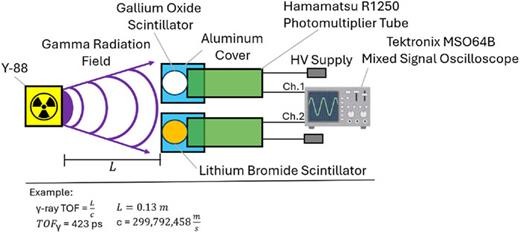
FIG. 2. Experimental diagram for gamma field detection using 88Y as a gamma source. Gammas emitted from 88Y travel a fixed distance to the β-Ga2O3 scintillator (top) and lithium bromide scintillator (bottom), each enclosed in an aluminum cover and coupled to a Hamamatsu R1250 photomultiplier tube (PMT). Scintillation signals received from the PMTs are sent to a Tektronix MSO64B mixed signal oscilloscope, allowing for threshold triggering of gamma interactions with each scintillator.
DOI:
doi.org/10.1063/5.0262102


